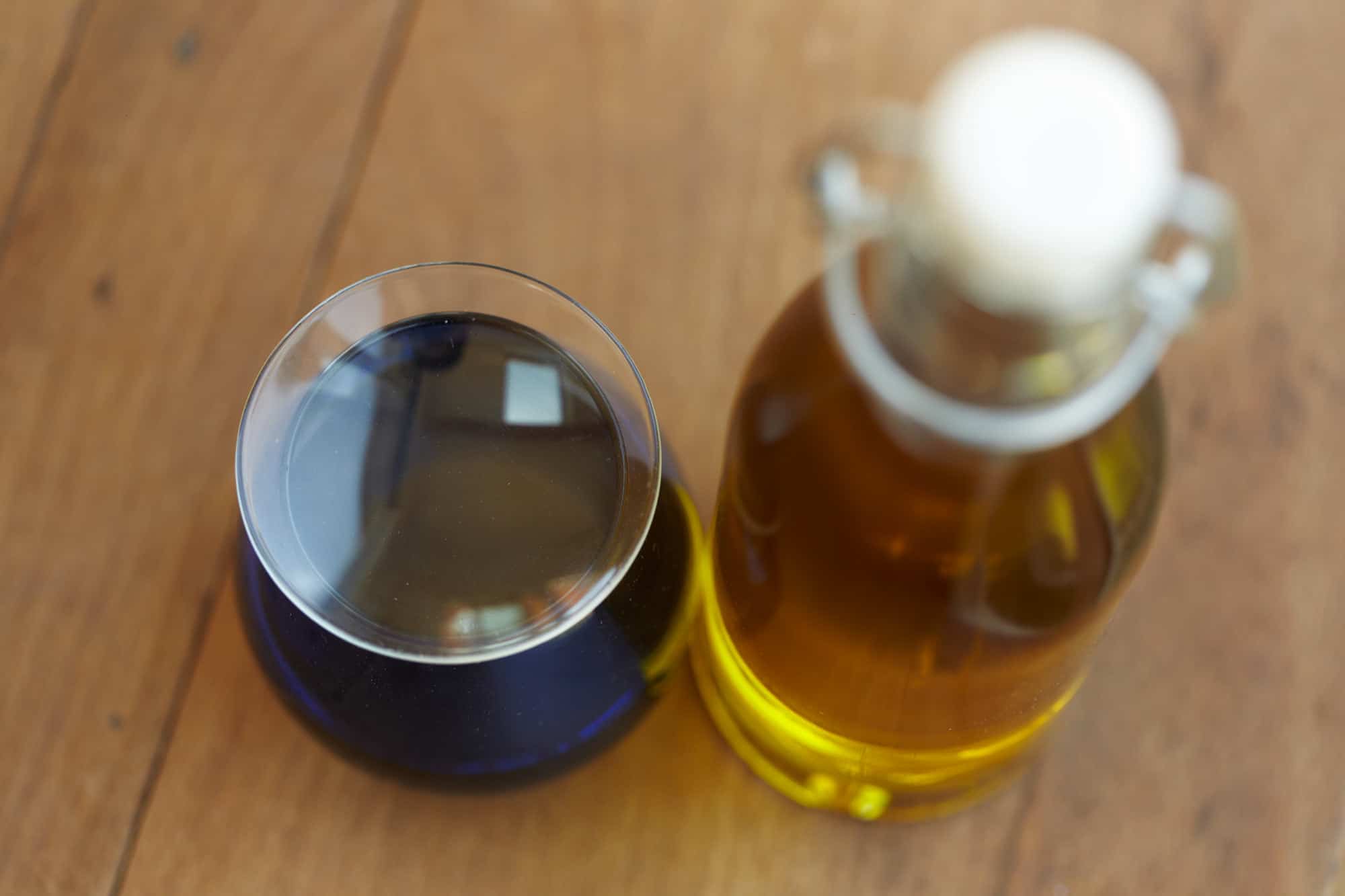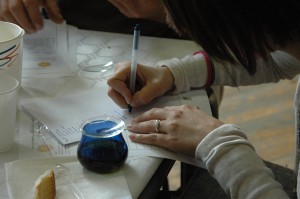The basics of oil tasting
To taste food, it’s consuming it delicately to define an organoleptic profile (description based on the rating by senses).
Thanks to our faculties of perception, identification and rating of the different sensations, the tasting allows us to appreciate the quality of food, in terms of personal tastes, typicality or technicality. Nowadays this approach is unavoidable for the marketing of some products because nothing can replace the human perception: man is still the only one to evaluate some organoleptic characteristics, good or not.
This complete description of the product allows us to fully appreciate its value in pure consumption as in indirect consumption, for combination in dishes or in uses as condiment.
Tasting conditions
Where ?
To be the most impartial and efficient in a tasting, the tasting conditions have to be as neutral as possible not to change our senses..
When ?
For a good tasting, it’s important to choose the right moment : generally this is just before a meal (moment where our body is the most responsive to the food characteristics) and more precisely just before lunchtime.
Be careful, too much information can easily saturate our sensory organs and particularly the one of olfaction and taste, so it is important to make some breaks between two products.
The tasting senses
For each of the senses used, have to be determined :
– the nature of perception (acid, salty for a taste, floral, « wooded » for an aroma, the colour for the sight …),
– its intensity : we perceive clearly, a little or not at all the sensation (a graduation specific to the product is generally used)
– the clearness : the fact that the perception is not clear could testify of the inappropriate tasting conditions or of a defect in the product.
So it is important to analyse in detail the product as well as appreciating it, and watch over to use all the functionalities of our senses.
The smell
A smell is a complex whole of fragrant molecules. The smell of rose can result from several molecules which, separately smelled, would not directly represent rose.
Good to know : contrary to generally accepted ideas, the best tasters are not the persons who have a « talent » but rather a very good olfactory memory : more we memorize the smells, the more we recognize them when they appear in a product, this is why it’s important to have a particular interest in the daily smells, whatever they are pleasant or not.
During the olfaction phase in a tasting, we split the perceptions into 3 axis :
– The first referring to smells given by the product,
– The second where we note the perceptions given when the product has been deliberately “changed” : well-ventilated for the wine, broken for the chocolate or Comté cheese (when we break a piece of Comté cheese or chocolate, new aromas are perceived).
– The last one concerns the retro olfaction , this perception assembles the aromas smelled after the ingestion in the mouth. The successive breathings made when the product is in the mouth allow to move the smells from the mouth to the nose. This is an important element of the tasting of olive oil.
This is necessary to find as many aromas as you can to describe a product to conclude on the profile of the product you taste.
The taste
We often make confusion about this sense. As a consumer we often find many products with mentions like “strawberry taste”, “chocolate taste”… even though the taste only concerns the sensations perceived on the tongue: bitter, sour, salty, sweet (and umami, which is a taste recognized by Asian cultures) and not the aromas perceived by retro olfaction as it seems to mean. We have to difference the taste (only perceived by the tongue) from the aromas (only perceived by the nose).
The most important in a tasting is to make the difference between all the possible tastes of the product you taste which can have no taste (such as water), or only one (olive oil only has bitterness) or several (acidity, sweet, bitterness for a wine) or the five senses. This is why it is important to move the product on the different zones of the tongue.
The touch
For the tasting, this sense is used by the tongue which can perceived the tastes and the tactile sensations. The tactile sensation is due to a physical phenomenon driving a move of the taste buds, we speak about kinesthetic sensation. Contrary to the taste, this sensation can be felt in other parts of the mouth such as gums, cheeks or throat.
The piquant of the olive oil, the astringency of red wine or the smoothness of a yogourt are good examples of tactile sensations we can perceive during the tasting.
As for the other senses, it is important to move the product into the mouth to feel better the diversity and the intensity of these tactile sensations. The intensity is still hardly quantifiable for these sensations because they are somatosensorial : they add to each other during the tasting, we often overnote the last product tasted for one of these perceptions.
The sight
Even if the visual aspect doesn’t take into account in the savour of the product, the visual aspect is still an important point in most of the tasting because it can give indications on the characteristics of the product. For the wine, for example, the tiled colours show an oxidation of the polyphenols and testify of the age of the product. For the Comté cheese, the colour of the paste show the season of its production: a straw-yellow paste testifies of a summer production and a pale-yellow paste of a winter production.












